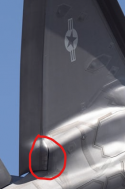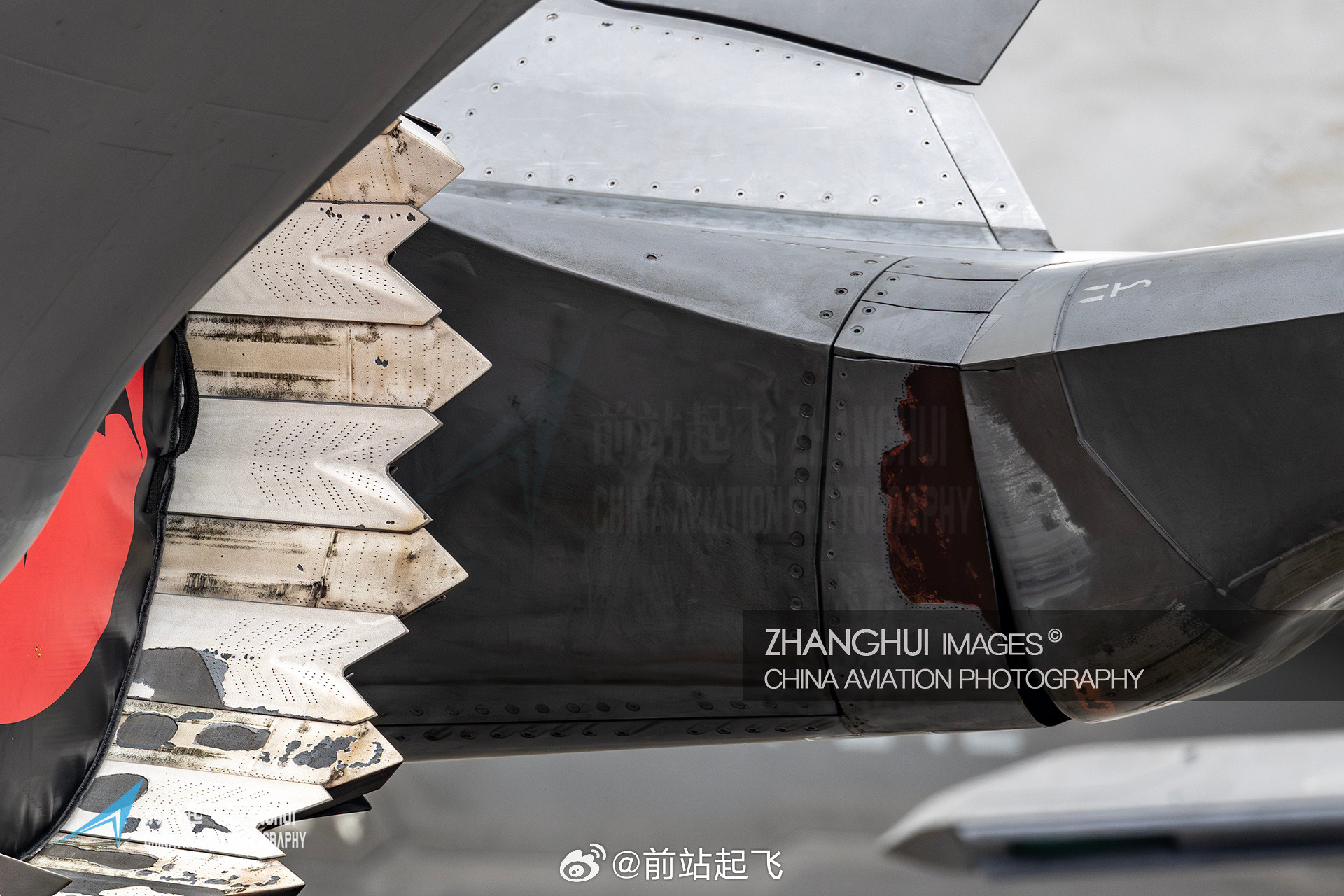You are using an out of date browser. It may not display this or other websites correctly.
You should upgrade or use an alternative browser.
You should upgrade or use an alternative browser.
J-20 5th Gen Fighter Thread VIII
- Thread starter Blitzo
- Start date
A nice close-up.

Looks like actuators get scratched up pretty good. Luckily the scratches aren’t exposed when the flaps are not moving. Otherwise it might incur RCS penalty.
Interesting to see the scrape from the gap filler on the fairing it looke like they are not that flexible.A nice close-up.

That's how things are. The cover has to be stiff enough to form a continouse housing, so scratch is garanteed. Think about your shining mobile phone, no matter how careful you are, after some months you will find lots of scratch marks.Interesting to see the scrape from the gap filler on the fairing it looke like they are not that flexible.
Besides, these parts are likely made of or covered by composite material, so scratches mean nothing to RCS.
F-35, see the gap and the light colored scratch.

by78
General
Looks like actuators get scratched up pretty good. Luckily the scratches aren’t exposed when the flaps are not moving. Otherwise it might incur RCS penalty.
Interesting to see the scrape from the gap filler on the fairing it looke like they are not that flexible.
The scratches aren nothing out of the ordinary. I've seen plenty of them on actuators.

We see a lot of pictures of immaculate J-20, making the asumption that they have very active maintenance or the jet are not used a lot.The scratches aren nothing out of the ordinary. I've seen plenty of them on actuators.

Seeing that kind of wear give us some indications that they are indeed well used but the small amount of these pictures give also the indication that maintenance is pretty good.
Last edited:
Are the slits on the actuator housing of the J-20 meant to reduce RCS? The ones on the F-35 do not have them.
Are the slits on the actuator housing of the J-20 meant to reduce RCS? The ones on the F-35 do not have them.
F-35 only has one flap per wing so the actuator is housed within the fuselage.
Yes, it helps to reduce RCS. It can be seen that the slit is about the same length of the zig-zag treatment of the rest of the fuselage. It means for the designed EM frequency band that J-20 is aiming to evade, the cover is stealthy. The purpose of the slitted cover is to shield the internal atcuator at all time. I think this detail does show that F-35 isn't in the same league to compare with J-20, F-22 is more appropriate.Are the slits on the actuator housing of the J-20 meant to reduce RCS? The ones on the F-35 do not have them.
It is more precise to say that covering the much larger gap reduces RCS, the slit is only to facilitate this purpose because the cover has to be flexible. The choice of the length of the slit is inline with all edge treatment.
I would be interested in seeing a closeup photo of F-22 but couldn't find any. US isn't as transparent as they used to claim.
I think the question is the possible effect of slit with RCS reduction. Even though F-35's actuator is buried in the fuselage it still has the big gap. The joint of the housing is a line 90 degrees to the axis of the fuselage even when the gap is closed when the flag is nutural. The joint is longer than all zig-zag treatment on the fuselage meaning that it is longer than the EM wave than F-35 is aiming to evade, therefor creating reflection. When the flap is at certain angle the gap exposes the atcuator, further increase RCS. The tail plane can block the gap from behind but only from above and few degrees below. The tail plane actuators have even larger joint lines and gaps untreated. I think F-35 just doesn't care that detail as it wasn't meant to be very stealthy from behind.F-35 only has one flap per wing so the actuator is housed within the fuselage.
Last edited:
Yes, it helps to reduce RCS. It can be seen that the slit is about the same length of the zig-zag treatment of the rest of the fuselage. It means for the designed EM frequency band that J-20 is aiming to evade, the cover is stealthy. The purpose of the slitted cover is to shield the internal atcuator at all time. I think this detail does show that F-35 isn't in the same league to compare with J-20, F-22 is more appropriate.
It is more precise to say that covering the much larger gap reduces RCS, the slit is only to facilitate this purpose because the cover has to be flexible. The choice of the length of the slit is inline with all edge treatment.
I would be interested in seeing a closeup photo of F-22 but couldn't find any. US isn't as transparent as they used to claim.
I think the question is the possible effect of slit with RCS reduction. Even though F-35's actuator is buried in the fuselage it still has the big gap. The joint of the housing is a line 90 degrees to the axis of the fuselage even when the gap is closed when the flag is nutural. The joint is longer than all zig-zag treatment on the fuselage meaning that it is longer than the EM wave than F-35 is aiming to evade, therefor creating reflection. When the flap is at certain angle the gap exposes the atcuator, further increase RCS. The tail plane can block the gap from behind but only from above and few degrees below. The tail plane actuators have even larger joint lines and gaps untreated. I think F-35 just doesn't care that detail as it wasn't meant to be very stealthy from behind.
It’s a democratic gap so authoritarian radars can’t detect it.
In other news, do an article on this please the Drive. This came straight from the horse’s mouth.
Since the J-20 already has the capacity to launch a number of missiles equivalent to the F-22, the carriage upgrade in stealth mode would give the J-20 a distinctive ; particularly because the J-20 can carry the PL-15, which is China’s counterpart to the U.S. AIM-120 Advanced Medium Range Air-to-Air Missile. While the range of the PL-15 is speculative and the range of the latest version of AMRAAM is classified, senior USAF officials have said the PL-15’s range exceeds that of the AMRAAM, giving the Chinese stealth fighter a potential first-look/first-shot capability against the American fighter.
